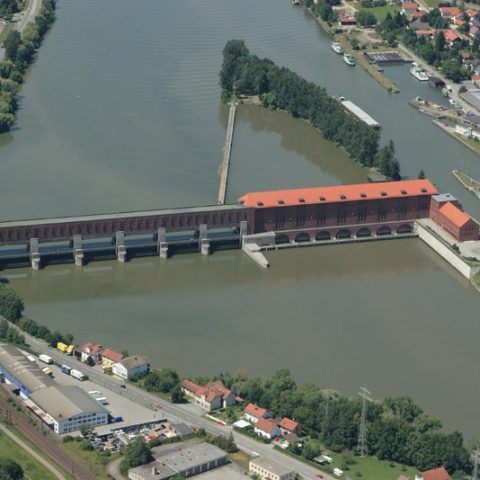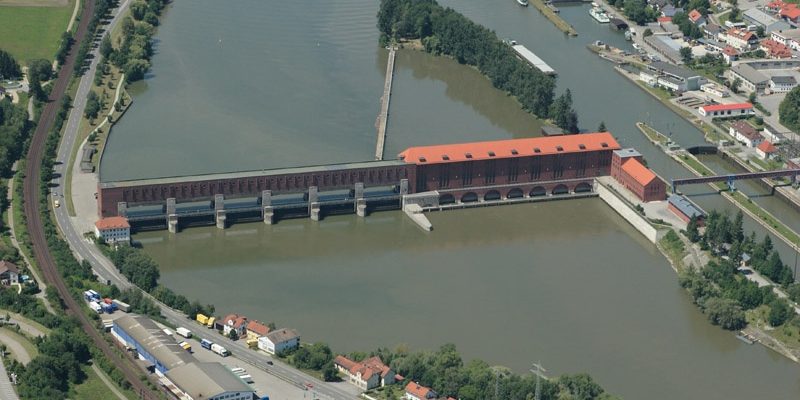Raychem’s self-regulating heating systems are providing a unique long-term, energy-efficient solution for frost protection at a major European landmark.
The weir at the Kachlet hydroelectric power station sits on the river Danube in Bavaria, Germany. Constructed in the 1920s, the weir provides flood protection by holding back the river water that flows to the power station while also providing the ability to release excess water in cases of turbine water or heavy floods.
While the weir’s enormous size (175 meters wide with 6 vertical lift gates, each 25 meters wide and 11.3 meters high) is a significant challenge for any project, the cold weather also poses a difficult task. The river water near the Kachlet station freezes approximately 21 days a year with the potential for ambient temperatures to reach as low as -20°C. In extreme conditions like this, the challenge is to employ a system that can ensure daily operations is essential.
Previous methods of freeze protection for the weir required large amounts of power consumption and excessive levels of maintenance. With the methods used consistently falling short of expectations, the weir needed a new way to protect its barricades in cold weather conditions.
The solution to help the weir ensure the protection of its operations is an electric heat tracing system with Raychem self-regulating heating cables and infrared-radiant heating. With over 1,400 meters of cable deployed into 66 circuits, the heat tracing system provides protection to the barricades’ sliding surfaces and seals.
The cables are either bonded directly or carried over the surfaces in pockets containing glycol-based heat transfer fluid. The self-regulating technology automatically adjusts power output to compensate for temperature changes. This allows for heat to be delivered only when and where it is necessary and removes the potential for heat build-up or burnouts. The fluoropolymer outer jacket provides exceptional strength and corrosion resistance which leads to substantial savings in energy and operating costs.
The weir is now suited to protect against harsh winter conditions while operating at a fraction of the cost of previous systems. The heat tracing system is used year round and offers reliable performance.


